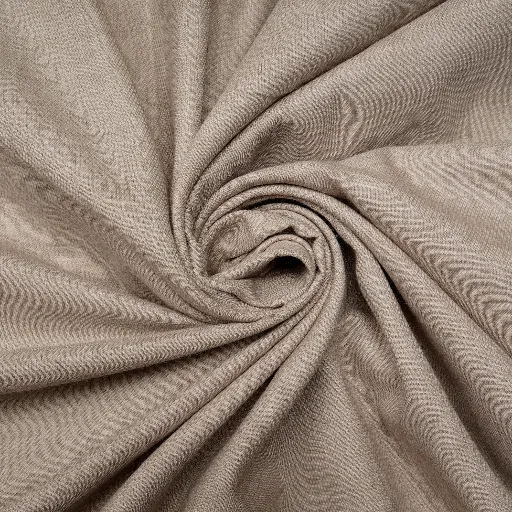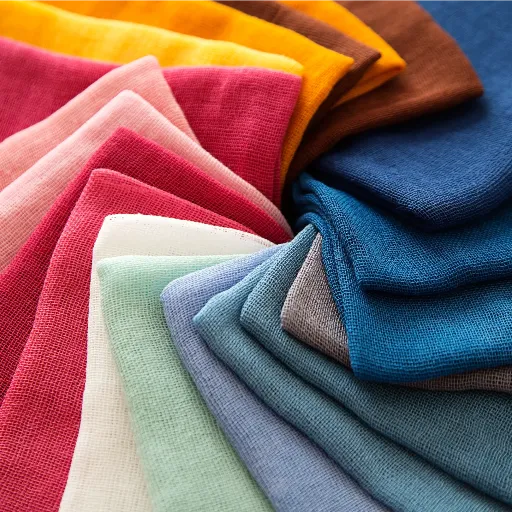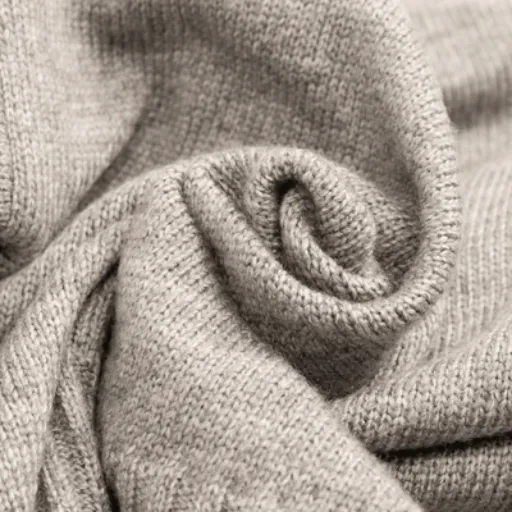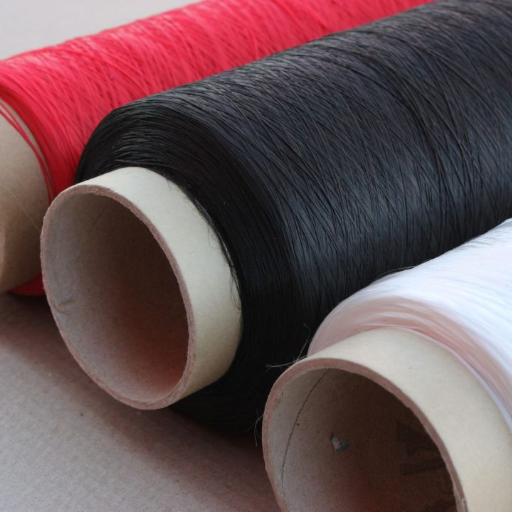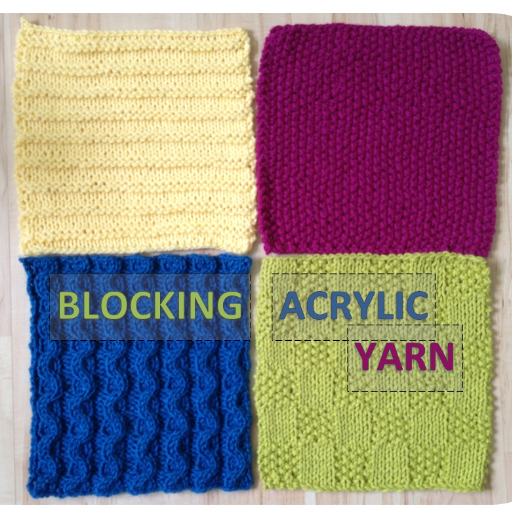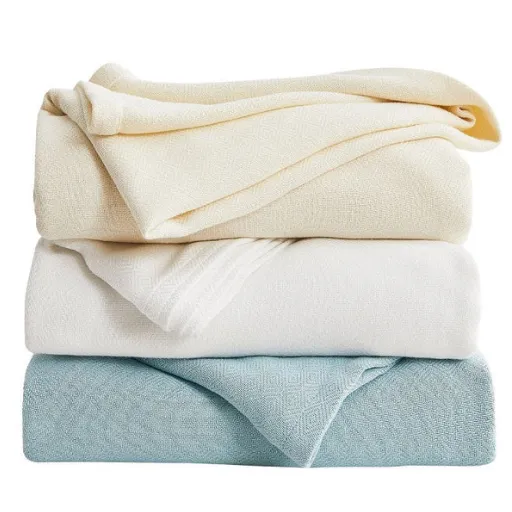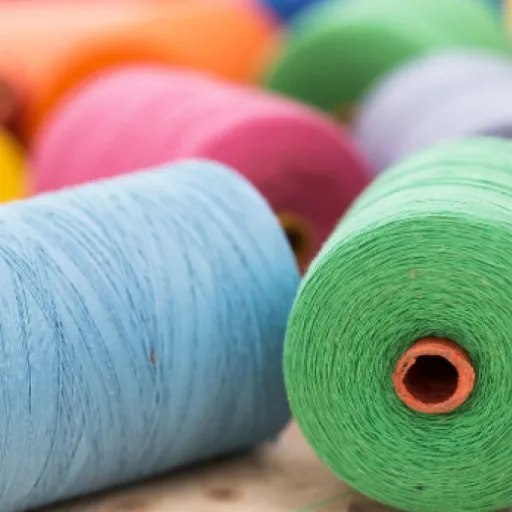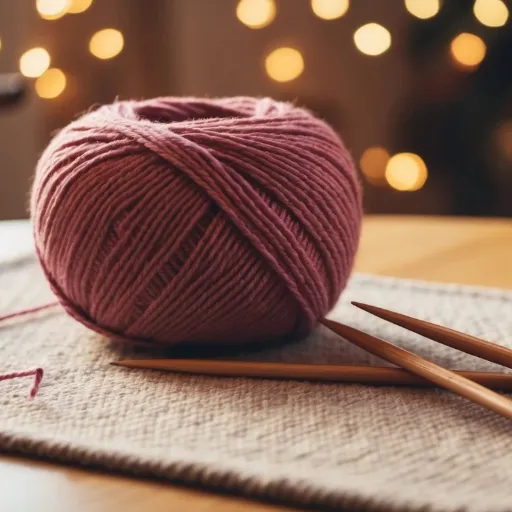The making of the ideal blanket necessitates the selection of the best yarn which is very important. When it comes to synthetic fibers, polyester and acrylic are the most widely used and compared between those two. It does not matter what level you are in the crafting process, knowing the differences between the two materials can enhance the quality of your final product. This text will discuss the characteristics, advantages, and disadvantages of the said yarns thus enabling you to choose wisely for your project. The discussion will revolve around durability and softness, care instructions and affordability—indeed, we cover everything, again literally! Keep reading to find out which yarn will suit you the most.
Introduction to Acrylic and Polyester

What are Acrylic and Polyester?
Acrylic and polyester are the two most synthetic fibers that are got from the petrochemical industy and are thus the most used artificial fibers in many industries, the textile industry in particular. They are both synthetic materials created through a chemical process involving different types of polymers that come from petroleum. Because of their versatility, they are used in most of the textile industries as they are convenient and durable.
Acrylic is as light and soft as a feather and hence, a very warm fiber that also mimics the characteristics of natural wool. Besides, its habit of attracting moths and consequently, causing damage is absolutely not a problem with acrylic. It’s breathability and softness make it ideal for knitted items, sweaters, and blankets. Acrylic yarn is another example of its use and it is especially favored by crafters for its cost-effectiveness, availability in various colors, and machine-washable nature.
On the other hand, polyester is a very strong and tough fabric. It even outlasts the most demanding conditions such as stretching, shrinking, and wrinkling, which make it widely used in many applications. Its strength and quick-drying features lead to its usage in the making of clothing, upholstery, and outdoor gear. Besides, polyester is also often mixed with other fibers to improve the fabrics’ performance and durability. Hence, both acrylic and polyester present different but equally important options that meet the respective needs of the users and their planned use.
Overview of Their Uses in Blankets
The use of acrylic and polyester fibers in blankets is a common practice, each having its own set of benefits. Acrylic blankets have been around for quite some time, and they are among the most lightweight and softest textiles that can be used for palliative or warming purposes, thus, they have become the most popular choice. They can effectively trap the heat, which is the main reason why they are perfect for winter or cold places. Also, the bed bugs and mold cannot affect the blankets even if the storage conditions are not very good as foretold in the company’s warranty period.
Polyester, however, is the favorite for its strength and versatility in blankets alongside all its other claims. These types of blankets are often considered less expensive, easy to take care of and not prone to shrink or get wrinkled. Moreover, polyester blankets are usually more resistant to water than any other cloth, thereby making them fit for daily use and in areas with fluctuating humidity.
Acrylic and polyester can be used collectively or blended and result in a blanket that has the best properties of both fibers. This flexibility leads to the straight-off products that come with longevity, heat, and less care by the customer, hence all the different needs and preferences are catered to practically. The two materials continue to be reliable options, thus, providing a wide selection to easily find what different users and purposes need.
Importance of Choosing the Right Material
The necessity of selecting the appropriate material cannot be overstated as it has a direct bearing on the product’s functionality, longevity, and user satisfaction. Acrylic and polyester among others, each have different characteristics that make them preferable for certain uses, whether it’s the case of warmth, ease of cleaning, or durability. With the right material chosen, the consumers will be able to have their product customized to their expectations without sacrificing either comfort or quality.
Acrylic is synonymous with its gentle touch, low cost, and fantastic heat-retaining ability. It is a featherweight option that resembles the feeling of natural fibers while being less liable to shrink or crease. This quality renders it especially suitable for the production of goods needing heat beside that they are easy to care for.
Polyester, on the contrary, is a champion of durability, resistance to creases, and remaining triumphant in the boring battle of wearing out. It is also very flexible and can easily be combined with other fibers, which then enhances its usefulness for a wide range of applications. The blending of these materials gives an equal measure of comfort, strength, and adaptability and hence makes it possible to meet varying customer requirements easily. At the end of the day, knowing the virtues of each material gives the chance to make smart choices that result in better and longer-lasting outputs.
Differences Between Acrylic and Polyester
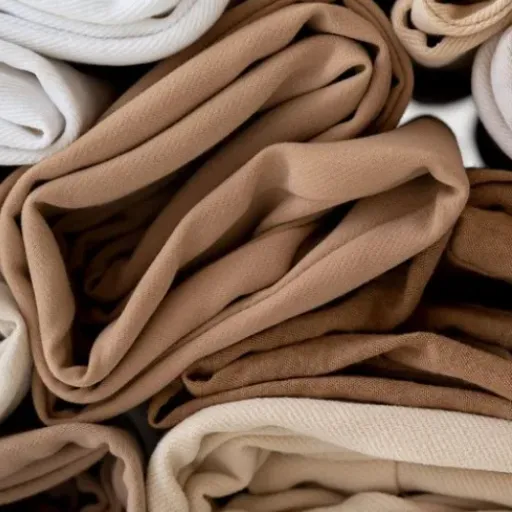
Composition and Manufacturing Processes
The difference between acrylic and polyester is huge when it comes to their composition and manufacturing processes. Acrylic is a man-made fiber mainly made from acrylonitrile, a chemically compound that if heated then polymerized, it forms a chain of very long molecules. However, polyester is a polymer from petrochemicals, mainly polyethylene terephthalate (PET), which is made through a polymerization process of ethylene glycol with terephthalic acid.
The acrylic fibers’ manufacturing is done through either the wet or dry spinning methods, and these methods give the fibers a look and whose feel very much resemble that of natural wool. Acrylic fibers are very light, soft, and are usually blended with other fibers to improve their qualities. Polyester, in contrast, is made with melt spinning. This method melts the polymer and pushes it through a spinneret to produce threads of continuous filaments. Polyester threads are associated with the properties of strength, durability, and excellent resistance to creases and shrinking.
To sum up, the differences in both composition and production indeed lead to the emergence of different characteristics of each material. Acrylic is a fiber that is valued for its warmth, soft touch, and low price, thus it is the most used material in cold-weather clothing. On the other hand, polyester is a fiber that is known for its versatility, strength and ability to wick moisture. These properties have made it a material of choice in a wide range of applications from activewear and home textiles to industrial uses. In the very least, it is necessary to understand these contrasts to select the right material for specific needs.
Durability and Longevity
In terms of durability and longevity, cotton and polyester each have their particular attributes that cater to varying needs. Natural fiber cotton, for instance, is less durable over time than synthetic fiber polyester. It is a soaking fabric, prone to ripping before and after washing, especially if the washing is done frequently. In contrast, polyester, a man-made fiber, is created to be strong and hard-wearing. Several research studies have so far concluded that polyester fabrics do not lose their qualities even after enduring frequent washing, thereby lasting much longer than cotton in terms of their look and feel.
Moreover, polyester’s resistance to wrinkles, shrinking, and stretching reinforces its reputation as a durable material even more so. If you look at the data from fabric performance tests, you will find that the lifespan of polyester can be almost double that of cotton when both are used under the same conditions. For example, cotton clothes will probably begin fading and losing their shape after one to two years of regular wear, whereas polyester will keep its original qualities for four to five years with proper care.
Moreover, not only has the production of t-shirts improved but also the quality of these raw materials that are used in the production of t-shirts. For example, blended fabrics like poly-cotton blends offer consumers a soft and strong option that is cost-efficient over time. These progressions emphasize the practice of choosing a material that matches the expected use and care requirements, therefore, the performance and durability can be aligned with the needs of specific applications.
Texture and Feel in Blanket Yarns
Blanket yarns are made to give the perfect mixture of soft, warm, and strong, so they are the best option for comfortable blankets. Depending on the quality, blanket yarns are frequently made by different ways, like cotton, polyester, and acrylic, or even mixtures of natural and synthetic fibers, each of which is selected for its ability to create a sumptuous and comforting texture. The yarn’s softness is influenced by the type of fiber used, processing, and thickness, with the finer fibers contributing to a softer feel.
The finish and weight of blanket yarns are also important factors in determining their feel and usage. Bulkier and heavier yarns make thicker, warmer, and heavier blankets which are ideal for the cold season. Besides, the method of spinning the yarn, whether brushing, twisting, or any other, can also affect its softness or give more texture. As a result, the yarn will not only be functional but also feel nice on the skin, even for those with delicate skin.
Another aspect that plays a significant role in determining yarn feel and texture is the finishing process that the yarn undergoes. Process in the yarn production like pre-washing or applying anti-pilling special finish not only maintains the yarn’s softness and durability but also lengthens the yarn’s life. Attention to detail in production, such as granting smoothness of use, ensures that blanket yarns are even in quality and diverse in preferences and requirements, ranging from summer lightweight throws to winter heavyweight blankets.
Performance in Various Conditions
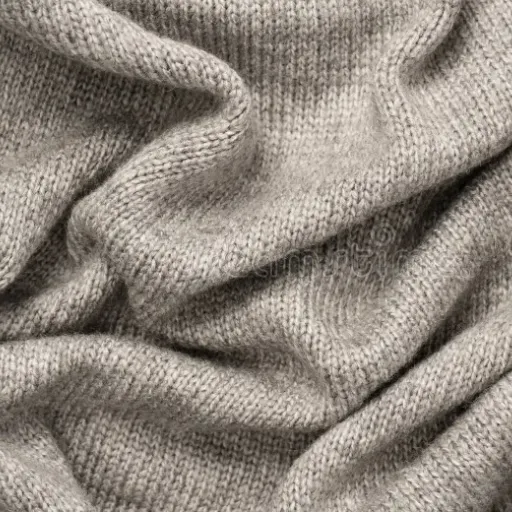
Insulation and Heat Resistance
The materials used in blankets have been specially designed to work well in a variety of situations and to resist heat and give warmth. The performance of the yarn depends on the fiber composition. Natural fibers, especially wool, have always been associated with good insulation by trapping the heat within the slabs and making the users warm when the temperature is cold outside. Apart from this, the heat-retaining quality of synthetics like acrylic or polyester is often combined with the lightness and the durability of the product, thus catering to the needs of different users.
The heat-resistant property of yarns is mostly determined by the production process and the raw materials used. Wool, for example, shows a moderate level of resistance since it is a natural flame-retardant fiber and can withstand higher temperatures without any damage. Conversely, synthetic fibers are more tolerant to high heat but eventually, prolonged exposure to high heat can be a negative factor as it can weaken or deform the fibers. The careful consideration of the yarn’s intended use helps in attaining optimal performance in different environments.
The need for warmth and at the same time to be able to endure heat is a main factor that determines the quality of blanket yarns. The blending of fibers is one of the manufacturing techniques that allows the producers to develop yarns that are reliable in all conditions. Blanket yarns can always fulfill the demands of comfort and lasting use if they are made from materials that are specifically designed for the different climates and situations.
Moisture Management and Breathability
Moisture management and breathability are two important features of yarns for blankets that influence comfort and performance at the same time. Good moisture management makes it possible for the fabric to wick the sweat and moisture from the body effectively thus keeping the user dry and comfortable in different situations. Breathability, meanwhile, is the property of the material to let air pass through it thus preventing overheating and the formation of a hot microclimate around the body.
The moisture management capability relies primarily on the types of fibers and blends employed in the production process. Among the synthetic fibers, polyester is often picked for its very good wicking properties while cotton or wool are natural fibers whose moisture holding capacity is highly regarded. By mixing these fibers, the manufacturers can get the best moisture management without losing other qualities like softness or strength.
Fiber choice and fabric design equally impact the breathability factor. The open-weave structures or lightweight knits allow better airflow which means more ventilation and less heat getting trapped. That is why breathable blanket yarns can be used in both hot and cold climates since they can adapt to the temperature changes. In summary, moisture management and breathability are the key factors in producing blankets that perform well in different situations, providing comfort and usability for a long time.
Wear-and-Tear Resistance
Durability is a main factor when looking at the wear-and-tear resistance of blanket yarns. The top-quality yarns are produced to last through the most frequent use and laundering processes without any significant loss of quality. The fibers’ strength, in addition to their resistance to pilling and fraying, is of great importance in providing durability. Fibers such as polyester or blends that have synthetic materials incorporated into them sometimes show this quality to a higher extent than others, thus making them a good choice for blankets that are going to be used regularly.
Another point of wear-and-tear resistance is the kind of weaving or knitting that was done during the blanket’s making. Tighter weaves or thicker knitting patterns for sure give more durability, as they are less likely to get snagged or pulled apart through the course of time. But at the same time, loose or very decorative patterns that are easy on the eye might give the blanket some beauty but they can turn into a factor that limits its durability when the blanket is used heavily or frequently. The choice of the right technique for making the blanket depends on the blanket’s purpose and usage frequency.
Lastly, when it comes to proper care and maintenance, these are the factors that would determine the length of the blanket’s lifespan. Washing instructions should be strictly followed as some kinds of yarns might get their strength or lose their quality when subjected to high temperatures or harsh detergents. Moreover, by storing blankets in cool, dry places, one may protect them from damage caused by fading or mildew which might happen due to the sun or moisture, respectively. A blanket can be a functioning and eye-pleasing product for years, provided that the right materials, construction, and care are used.
Advantages and Disadvantages of Each Material
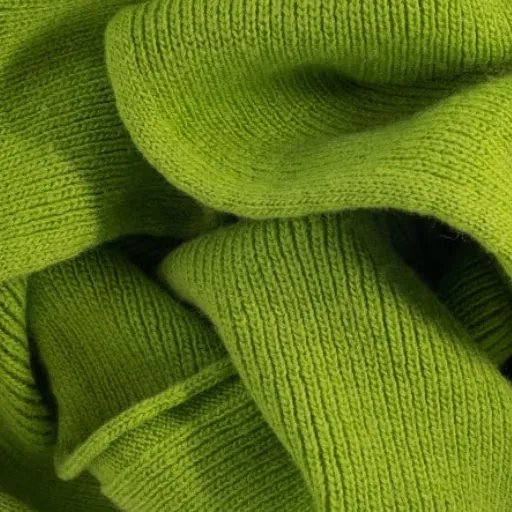
✓ Advantages of Acrylic Fabric
Acrylic fabric is recognized for its long-lasting and flexible qualities; thus, it is the most widely used fabric in a variety of industries, from households to fashion. Resistance to moisture, mildew, and UV light has been one of the main qualities leading to its use and has a positive effect on the fabric’s lifespan in outdoor areas. Synthetic fibers keep their bright colors for a longer period than natural fibers, thus acrylic is a perfect choice for bedding, flooring, and outdoor furniture because of its great color retention properties when compared with cotton and other fibers.
Moreover, the touch of the fabric is comparable to that of wool as it is lightweight and warm, but the downsides of wool such as the heaviness and itchiness are not present in the case of acrylic. The synthetic fiber, as a result, after the first use, will not change in size like cotton, for example, which is a factor that makes maintenance very easy and the fabric to maintain its quality over time. Moreover, the eco-friendliness of acrylic has been further developed with the advent of modern technology in the manufacture of acrylic products. For instance, some companies now use a percentage of recycled materials in the manufacturing of the fabric, hence lessening their environmental impact as compared to traditional practices.
Studies have shown recently that the ability of acrylic to retain heat is about 20% more than that of some other types of synthetic fabrics such as polyester, which is why it is preferred in cold areas. Besides, the price of acrylic is much lower than that of natural fibers such as cashmere or wool, hence it is accessible to various consumers who want a combination of practicality and cost-effectiveness.
✗ Disadvantages of Polyester Fabric
Polyester fabric has been widely used and is economical, yet still has some disadvantages that cannot be ignored. One of the most important problems is its poor breathability. The synthetic nature of polyester traps heat and moisture, therefore making it saturated and unwearable during the hot and humid periods. Besides, polyester is not so friendly to nature because it is made from plastic, a non-renewable resource, and its manufacturing process adds pollution to the environment. Recent research states that polyester makes up about 52% of the world’s fiber market and its manufacturing process is the reason for about 5.5 kilograms of CO2 emissions being produced per kilogram of fabric cast.
Another point against polyester is that it takes a long time for the smell created from heavy usage to dissipate because of bacteria getting caught in its fibers. Moreover, polyester’s low-temperature resistance will entail the risk of melting or warping if it were ever to come in contact with heat, hence it is unsuitable for some usages. In addition to that, the shedding of microplastics which happens during the washing of polyester garments,has turned into an issue of concern for the environment. The studies have shown that one polyester garment can shed hundreds of thousands of microfibers during one wash and those fibers will eventually get to the oceans where they will endanger marine ecosystems and biodiversity. Therefore, these aspects point to the need for the development of new environmentally friendly substitutes and advancements in recycling techniques to lessen the ecological footprint of polyester.
Comparative Analysis of Both Materials
| Aspect | Details |
|---|---|
| Environmental Impact | The environmental impact of natural fibers like cotton and synthetic fibers such as polyester needs to be evaluated from different angles as each has its own set of problems. Cotton, being a natural fiber, is both biodegradable and renewable. But cotton farming not only uses a huge amount of water but also leads to the application of pesticides, soil erosion, water cycle disturbances, and pollution. Polyester, on petroleum, is a synthetic fiber that has no regenerative nature. Although polyester production is less water-consuming than cotton, it still has environmental issues related to it. |
| Durability and Longevity | Polyester lives up to the hype of being a robust, wrinkle-free, and quick-drying fabric; hence, it is a favorite for sports and outdoor wear. The opposite is true for cotton which, despite being softer and cooler, has a less enduring power due to being an organic material. Polyester clothing is commonly used for a long time, hence fewer replacements are made, which covers a bit of its impact on the environment. |
| Economic Considerations | Looking at it economically, generally, the production of polyester is more cost-effective and easier to scale up than cotton. Being syntheti,depend polyester can be produced in bulk without being dependent on seasonal factors, unlike cotton which is grown through a process that is highly influenced by weather and harvest size. Still, organic cotton which is produced through eco-friendly methods, is increasingly being accepted by consumers and retailers despite its production cost being higher. |
| Consumer Preferences | Consumer preferences sometimes depend on the aspect of comfort as well as the intended use. Fashionable cotton has always been the leading fabric for its skin-friendliness, airiness, and non-allergenic traits and thus is the favorite of people who have sensitive skin and for day-to-day wear. However, the polyester gains points for being suitable for sports activities, thanks to its features like sweat-wicking and more flexibility. The mixed fabric using both cotton and polyester is becoming more and more common as it provides the user with the right amount of comfort along with the right amount of practicality. |
| Latest Trends in Recycling and Innovation | One of the most effective recycling methods currently is the recycling of polyester fibers through chemical means, which helps in waste reduction and the reclaiming of materials for reuse. Next to chemical recycling, innovators are focusing on creating bio-based polyesters that would have better biodegradability properties in the environment. Moreover, sustainable cotton projects such as the Better Cotton Initiative (BCI) and organic certifications are growing by addressing the environmental issues connected with cotton cultivation through water-saving and chemical-free practices. |
How to Choose Between Acrylic and Polyester for Blankets
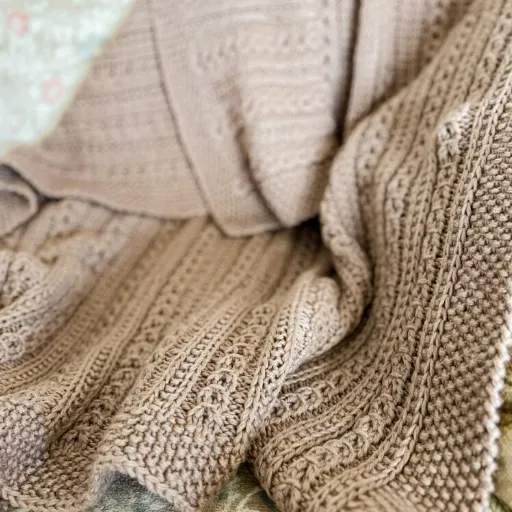
Factors to Consider When Choosing Fabric
Choosing the right fabric for blankets necessitates the assessment of different aspects to ensure the material matches your requirements and tastes. Below are some points that can guide you in selecting between acrylic and polyester for blankets:
| Factor | Description |
|---|---|
| Warmth and Insulation | Acrylic blankets have their warmth and wool-like feel as their main characteristics; besides, they do offer great insulation being a popular pick for cold regions. Polyester has less insulation but still performs well overall, particularly when mixed with cotton or fleece. |
| Durability and Maintenance | Both acrylic and polyester can be classified as synthetic fibers, and one of their common features is durability. Nevertheless, acrylic is more prone to pilling with time, and this factor may affect its lifetime. Polyester is more resistant to the damage caused by use and modern variants like microfiber are produce even further durability. The cleaning and maintenance of these fabrics are not a problem at all; both of them are machine-washable though acrylic may need gentler settings. |
| Cost | Polyester generally comes at a lower price than acrylic, thus it is a choice of fabric for consumers whose budgets are not very tight. Acrylic, on the other hand, is usually priced slightly higher due to its wool-like feel and perceived luxury. However, the recent market trends indicate competitive prices for both materials as production is becoming more efficient. |
| Feel and Aesthetic | The feel of each fabric might be a factor in influencing your decision. Acrylic is soft and luxurious, resembling natural wool, so it is perfect for warm and cozy places. Polyester, although being adaptable, can sometimes not feel as good as it is. However, with the development in textile technology, at least some of the softness and texture in high-quality polyester blankets have, been made much better. |
💡 Key Takeaway: Your final decision between acrylic and polyester should mainly consider the priorities of warmth, maintenance, sustainability and your personal taste. If all of these factors are taken into account, you will be able to choose a blanket fabric that not only best suits your needs but also conforms to the current trends of eco-friendly materials.
Common Applications of Each Material in Blankets
Acrylic is one of the materials that has been widely used in blankets,or where softness and warmth are the most important factors. The fact that it is light but at the same time insulates well makes it very suitable for cozy throws and bedding meant for chilly climates. People pick acrylic blankets mainly because they are inexpensive, come in bright colors, and are easy to take care of since they do not wrinkle and shrink.
Polyester, on the contrary, is often found in blankets that are versatile and durable all over. Its strength and toughness make it suitable for everyday use, especially in houses with kids or pets. Polyester blankets are also known for their good moisture-wicking abilities, which is why they are popular as outdoor or all-year-round blankets. Moreover, polyester is frequently combined with other materials to make them soft while still being strong.
Both materials are very common in decorative and functional blankets. Acrylic will be the first choice for applications that require soft feel and warmth, like fluffy and knitted designs, while polyester will be the choice for practical and long-lasting blankets especially those that are going to be washed often. Choosing the right material is mostly based on the blanket’s purpose and the customer’s requirements.
Real-Life Examples and Recommendations
The decision between acrylic and polyester blankets can be tremendously guided by real-life applications. For example, acrylic blankets are perfect for colder regions or they can be used in places where the main requirement is a soft, cozy texture. They are often the winter throws or the decorative pieces that not only add warmth but also enhance the aesthetic of the living room. These blankets are often favored by those who want both style and comfort in equal measure.
If we look at the other side, polyester blankets can be the best choice for the family or individual who values durability and easy care the most. The properties of polyester which include wrinkling, stretching, and shrinking resistance, make it suitable for daily use, especially in homes with children or pets. For all the time uses, like bed coverings or travel blankets, polyester gives a dependable choice that can take regular washing without losing its form or texture.
In the end, the selection between acrylic and polyester blankets is determined by the individual’s particular needs. For ostentatious purposes and an exquisite feel, acrylic is the favored material. But for practical, long-lasting use, polyester provides greater durability and low-maintenance convenience. Knowing these real-life examples, it will not be difficult to choose the blanket that best suits your lifestyle.
Frequently Asked Questions (FAQ)
❓ What are the central contrasts between acrylic and polyester fabrics?
Acrylic and polyester both belong to the category of synthetic fabrics but still have very different properties. The fleece-like texture of acrylic makes it softer and warmer, but on the other side, the rough texture of polyester is its main property that is moisture resistant. Due to this resistance of polyester to wear and tear, the yarn is predominantly used for making outdoor clothes.
❓ Is acrylic cheaper than polyester?
On the whole, acrylic is the cheaper option in comparison with polyester. This affordability factor has made acrylic to be a very famous choice across all fabric varieties though it won’t last as long as polyester.
❓ How does the softness of acrylic compare with that of polyester?
Acrylic has a soft touch when compared to polyester, which leads to its being selected for making comfortable items like the softest of blankets. Still, while polyester can also be soft, it does not necessarily retain the warmth of acrylic.
❓ Are there any environmental issues related to acrylic and polyester?
Indeed, both acrylic and polyester have their environmental issues, due to being derived from non-renewable sources. Acrylic comes from synthetic fibers that are derived from oil, while polyester can be extracted from either recyclable polyester or plastic-based PET. So using virgin polyester releases pollutants into the environment.
❓ What are the advantages of polyester yarn over acrylic yarn?
The major characteristics of polyester yarn are its durability and good moisture-wicking properties, which make it suitable for outdoor usage. Also, the resistance of polyester yarn to wear and tear is greater than that of acrylic yarn and the latter is less often requiring care as well.
❓ Can acrylic be combined with polyester?
Acrylic can be mixed with polyester in such a way that the resulting fabric has the feel and softness of acrylic plus the durability of polyester. The high quality of this fabric can be attributed to its versatility, which makes it suitable for a wide range of uses.
❓ Which is the one for warm clothing, acrylic or polyester?
Acrylic is typically the choice for warm clothing because of its heat retention and soft feel, making it ideal for sweaters and blankets. However, polyester might be a better choice in activewear where moisture management is an issue.
❓ In care and maintenance, how do acrylic and polyester compare to each other?
Acrylic and polyester are both washable and easy to take care of. Yet, in this aspect of performance, polyester is usually seen as the better fabric because it does not shrink or wrinkle easily and thus lasts longer.
❓ What factors should I bear in mind if I am to choose between acrylic and polyester for outdoor use?
For the outdoor application, be sure to weigh the advantages of polyester in terms of durability and moisture resistance and acknowledge that it outperforms acrylic in extreme outdoor conditions. Acrylic will give warmth but it will not last as long as polyester in terms of wear and tear.
❓ Are there different textures in acrylic and polyester fabrics?
Definitely yes, both acrylic and polyester fabrics are available in a wide range of textures. Acrylic gives a plusher and warmer feeling, whereas polyester can be made with different processes to have an exceptionally soft or coarse texture, thus catering to different customer needs. This diversity allows for different areas of application in textile fabrics.
References
- Big Z Fabric Blog: Two Common Synthetic Fibers – Polyester vs Acrylic
This blog provides a detailed comparison of the properties and uses of acrylic and polyester. - Reddit Discussion: Acrylic vs Cotton vs Polyester
A community discussion offering insights into the practical differences between these materials. - Quora: What is the difference between polyester and acrylic?
A question-and-answer thread discussing the key distinctions between the two fabrics. - Thai Polyester Blog: Difference Between Polyester Yarn and Other Synthetic Yarns
This blog explains the chemical and functional differences between polyester and acrylic.








